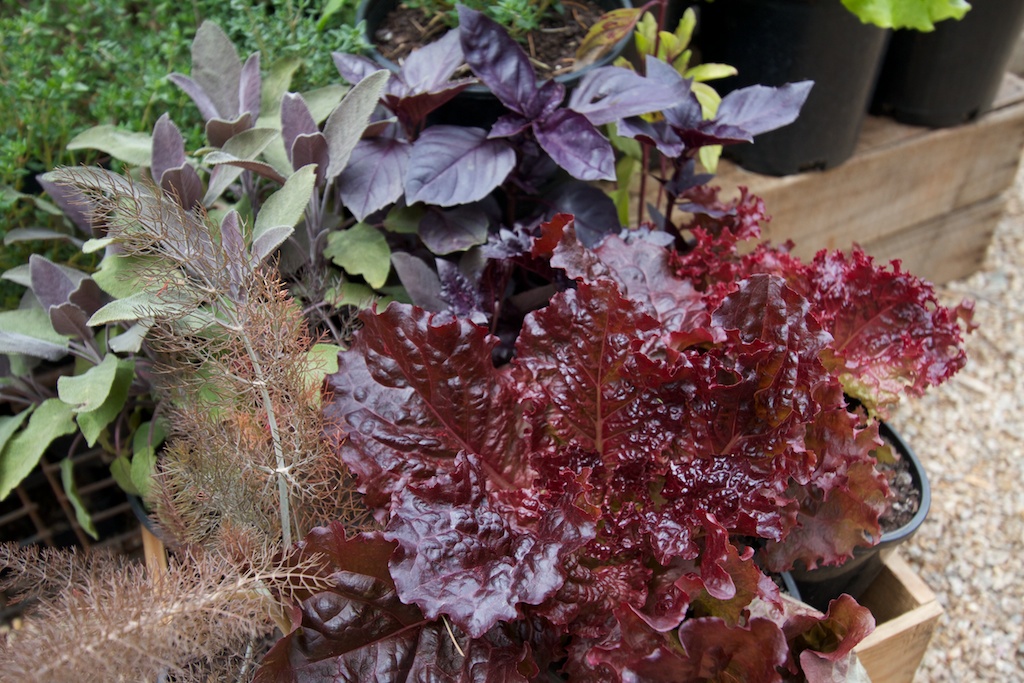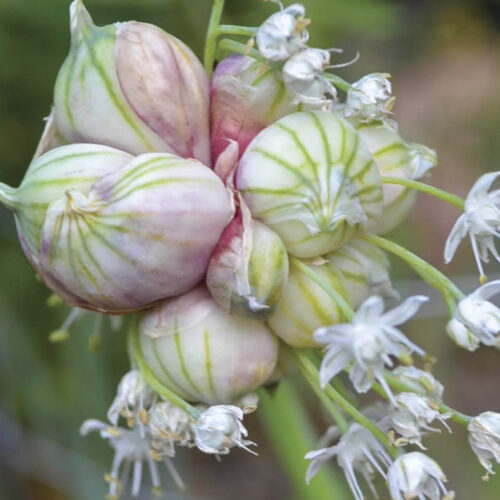Red and purple edibles
2013-11-21T05:14:58+11:00
Add colour and interest to your garden by planting red and purple-leafed edible plants says PENNY WOODWARD.
Right now our gardens are alive with the fresh bright greens of newly sprouted vegetables. And there will probably be the blue greens of late brassicas and broad beans as well. But why not add another whole palette of colours and flavours by planting some red and purple leafed herbs and vegetables to contrast with the greens. One of my favourites is the purple leafed form of common sage, Salvia officinalis ‘Purpurascens’.
In spring the new growth is richly red-purple and in another month or so these leaves will be topped by deep blue-purple flowers. The leaves are used in the same way as common sage, for stuffings and sauces as well as to flavour stews and stir-fries. They also make a delicious herb tea (made by pouring boiling water over a few leaves) especially when combined with a teaspoon of honey. Plants need full sun and good drainage to thrive.
If you can find a spot that is protected from the hot afternoon sun, then plant some red-leafed lettuces. Try cultivars like ‘Red Leprechaun’, ‘Red Iceberg’, ‘Red Velvet’ and ‘Rouge d’Hiver’. These lettuces not only look great in the garden but their crunchy, flame coloured leaves are delectable in summer salads.
Deeply bronze purple, the leaves of purple basil have a rich spicy flavour that perfectly reflects their colour. In cooler regions, plant basil only when the weather has really started to warm in December, but for the rest of Australia now is the perfect time to plant out all types of basil. Their main requirements are good composty rich soil and plenty of water during dry weather. Start picking the leaves are soon as the plants are big enough, and add them to salads and pesto sauces.
Bronze fennel is a purple-leafed form of the common green fennel, Foeniculum vulgare. Green fennel is a weed in many regions, but bronze fennel is much less likely to self sow and become weedy. Grow it from seed sown where it is to grow and thin out when seedlings are a few centimetres tall. Fully grown fennel plants can be up to a meter and a half tall, so make sure you have plenty of space to let them grow. In the garden, the feathery purple-bronze leaves combine particularly well with orange flowers. Delicious aniseed flavoured leaves and seeds can add flavour to a range of dishes but are especially good with seafood. Tea made from the seeds or leaves is pleasant tasting and will ease indigestion.






